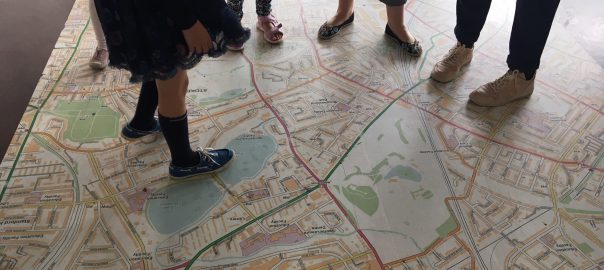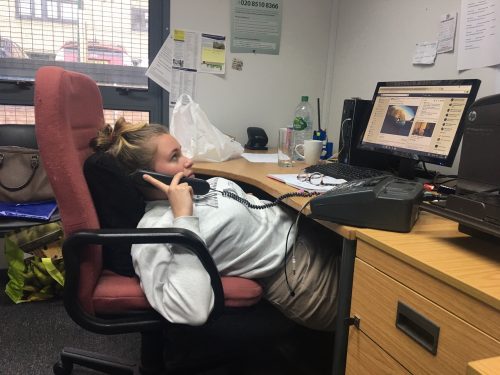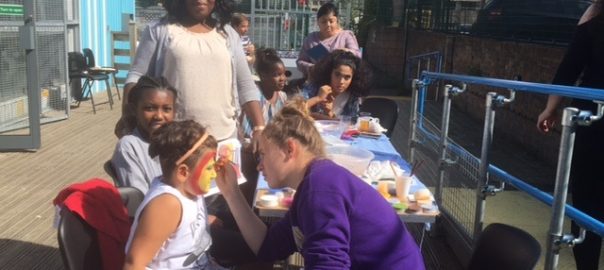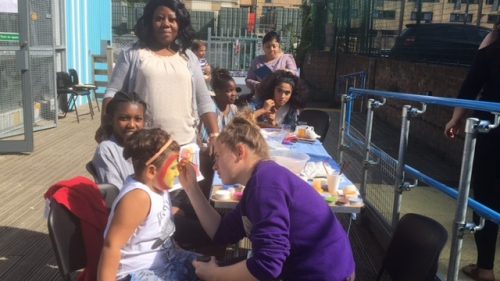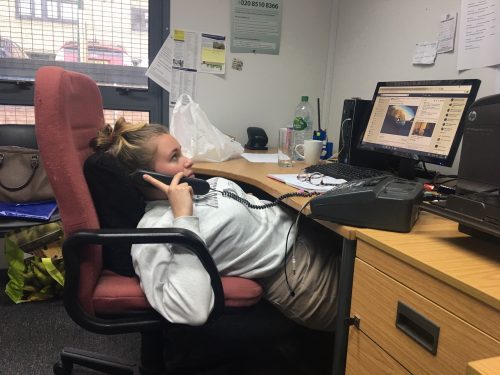Last Saturday a small enthusiastic group of resident volunteers from Kings Crescent Estate in Hackney, their newly re-elected ward councillors and some of their children made the short journey to the Redmond Community Centre at Woodberry Down. This was intended as fact-finding mission as we seek to inspire residents to look at ways in which the proposed community centre to be built in the final stages of the regeneration might bring a new vibrant social and community life to the area. The Redmond Centre is managed by the Manor House Development Trust (MDHT) which has operated for almost 11 years at Woodberry Down.
The lovely temporary Vince Murrain Centre is under-used which is a shame and a cause for concern for the Council who have committed to reprovide the facility. It will be removed to make way for the construction of the next phase and replaced in the ground floor of one of the new buildings.
We had struggled to get volunteers to attend but were grateful that a few people showed interest and gave up their morning. The first thing you notice about the Redmond Centre when you enter is the high ceiling, the next is the mass of activities taking place and being advertised. The map on the floor reminds you that you are just less than ten minutes walk away from Kings Crescent, not in another world. The children quickly realised that the more interesting feature of the Centre is not the building but the linked yet separate play area. The parents quickly realised that they could relax and absorb the presentation and tour feeling their children were occupied and safe.
As ever, Simon Donovan (CEO of the Trust) spoke passionately about the model he has established to ensure that the Centre is viable and how the business relies not just on a paid team; but draws volunteers from corporate and student organisations. The things that impressed residents in the tour were the small and simple things: the community fridge which has given away 300kg of food; the recycled wood used for the ceiling and shelving; the communal growing area; and the open design of the entrance.
Lessons learnt from the visit are:
- Community is more complex than just an Estate
- Linking indoor and outdoor community space works really well
- Running a centre has to be treated like running a business
- The building is just a platform for developing and implementing ideas
We hope to develop more ideas through visiting other centres and talking to more social enterprises over the coming months . Although Kings Crescent’s Community Centre won’t have the back-drop of the reservoirs to frame their environment, there is already a playable street to which will be added high quality landscaping. Just add Community.



